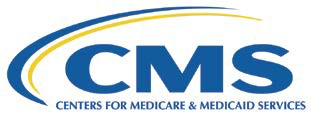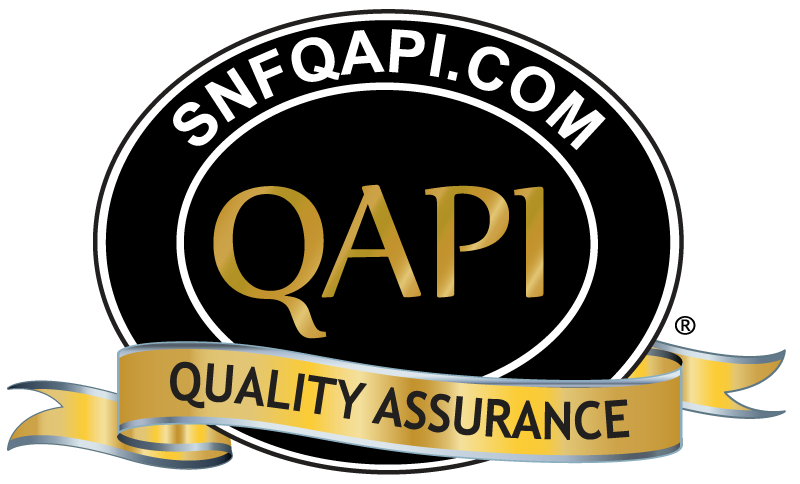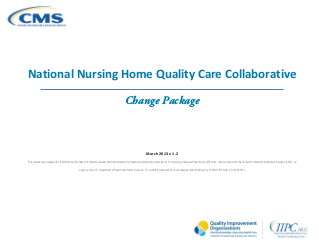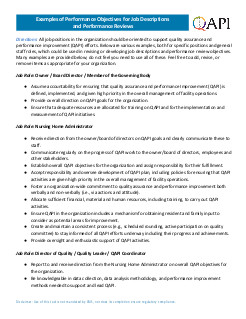12 Action Steps
STEP 2: Develop a Deliberate
Approach to Teamwork
Teamwork is a core component of QAPI and too often it is taken for granted. You
will hear and read that you should discuss a situation with “your team,” or
that the opinion of “everyone on the team” is valued. The word “teamwork” may
have different meanings. Many people work together without being a designated
or formal “team.”
Characteristics of an effective team include the
following:
- Having a clear purpose
- Having defined roles for each team member to play
- Having commitment to active engagement from each member.
The roles of team workers may grow out of their original discipline (e.g., nurse, social worker, physical therapist) or their defined job responsibilities.
QAPI relies on teamwork in several ways:
- Task-oriented teams may be specially formed to look into a particular problem and their work may be limited and focused.
- PIP teams are formed for longer-term work on an issue.
- When chartering a PIP, careful consideration must be given to the
purpose of the PIP and type of members needed to achieve that purpose. Here
are some examples:
- A PIP team with the goal of helping residents go outside more often decided that grounds personnel needed to be on that team so that procedures for snow removal, sun protection, and outdoor seating could be considered.
- Another PIP team working at simplifying medication regimens included a pharmacist, even though the time needed to be added to the consultant contract.
- After a PIP team began working on the problem of anxiety among residents, the members realized that many of the affected residents reported reassurance from the pastor and asked the QA committee to add him to the team that was planning the approach.
- A PIP team working on reducing falls asked that the housekeeping department be involved as it considered root causes of falls and realized that equipment in the corridors and clutter in the bathrooms contributed.
Note: Generally, each team should be composed of interdisciplinary members. For example, a concern with medication administration should include nursing and pharmacy team members. However, even other disciplines or family members may bring a different perspective to understanding this issue and should be considered for this type of team.
- Family members and residents may be team members, though for confidentiality reasons, they may not review certain data or information that identifies individuals.
- PIP teams need to plan for sufficient communication—including face-to-face meetings to get to know each other and plan the work. The team should also plan for the way each team member will review information that emerges from the PIP.
- Leadership needs to convey that being on a PIP team is an important part of the job—not something to put aside if other things come up. They must also support this idea through action and resources to enable staff to complete daily assignments, provide clinical care and also participate on QAPI teams.
https://www.cms.gov/medicare/provider-enrollment-and-certification/qapi/downloads/qapiataglance.pdf

Introduction
This change package is intended for nursing homes participating in the National Nursing Home Quality Care Collaborative led by the Centers for Medicare & Medicaid Services (CMS) and the Medicare Quality Improvement Organizations (QIOs), to improve care for the millions of nursing home residents across the country. The Collaborative will strive to instill quality and performance improvement practices, eliminate Healthcare- Acquired Conditions (HACs), and dramatically improve resident satisfaction by focusing on the systems that impact quality such as: staffing, operations, communication, leadership, compliance, clinical models, quality of life indicators and specific, clinical outcomes (targeted focus on inappropriate antipsychotics in persons living with dementia, falls, pressure ulcers, physical restraints, urinary tract infections, and healthcare- acquired infections).
This change package is focused on the successful practices of high performing nursing homes. It was developed from a series of ten site visits to nursing homes across the country, and the themes that emerged regarding how they approached quality and carried out their work. The practices in the change package reflect how the nursing homes leaders and direct care staff at these sites shared and described their efforts. The change package is a menu of strategies, change concepts, and specific actionable items that any nursing home can choose from to begin testing for purposes of improving residents’ quality of life and care. The change package is intended to be complementary to such resources as literature reviews and evidence-based tools and resources.
Acknowledgments
We gratefully acknowledge the contributions of the following organizations that so generously shared their time, effective practices, and their experiences which informed the content of this change package.
- Bethany Health Care Center, Framingham MA
- Foulkeways at Gwynedd, Gwynedd PA
- Franciscan Convalescent Hospital, Merced CA
- Jewish Healthcare Center, Worcester MA
- Landis Homes, Lititz PA
- Mercy Retirement & Care Center, Oakland CA
- NHC Healthcare – Anderson, Anderson SC
- NHC Healthcare – Parklane, Columbia SC
- Pleasant View Home, Albert City IA
- Westview Care Center, Britt IA
4. Strategy: Nourish teamwork and communication.
Change Concepts
- Expect and support effective communication with staff and between staff.
- Be a collaborator among collaborators.
4.a Change Concept: Expect and support effective communication with staff and between staff.
Action Items
- Implement a formal method for communication between shifts. For example, face to face meetings or huddles between shifts, Nursing Assistant shift-to-shift bedside report, and a communication journal in residents' rooms.
- Conduct regular staff surveys and share results with staff, including opportunities for staff response and questions.
- Establish the use of learning circles and huddles to foster relationships and create an opportunity for all to be heard.
- Establish a process of updating care plans that supports effective communication, is sustainable in practice and requires measurement.
- Include “all voices” that have a stake in what is being discussed. For example, if you are discussing an issue that pertains to a household you need to include the nursing assistants, dining, housekeeping, nurses, residents, families, etc. Use methods that encourage open and honest communication, especially to get at concerns. For example, staff may be more willing to share concerns in an anonymous survey.
- Develop communication plans that use multiple approaches (e-mail, verbal, newsletters, etc.) based on content and audience to ensure a consistent message is disseminated throughout the facility and across all shifts. Do not rely on word-of-mouth.
- Include all shifts in communications.
- Establish regular neighborhood meetings on each shift for the purpose of identifying what is working well as well as opportunities to improve.
-
Remove boundaries between departments. For example:
- Shadow other disciplines at the time of hiring so they know what everyone needs to do to make the household run.
- Have housekeepers become CNAs which fosters communication and understanding between roles.
- Use interdisciplinary teams for problem solving.
- Hold neighborhood meetings that all disciplines attend.
4.b Change Concept: Be a collaborator among collaborators.
Action Items
-
Provide training in systematic methods so the team focuses on the project, not on figuring out how to work together as a team.
- Use templates or methods for consistency and to support shared expectations of process. For example, agenda and minutes.
- Use organizational resources. For example, having a place to put information on an intranet/SharePoint.
- Encourage team tools such as brainstorming techniques.
- Provide training on how to coach and provide feedback.
- Celebrate successful collaboration.
- Create systems that support teams to function even when they do not have the luxury or meeting to discuss. For example, a list of zip codes available of all staff to quickly organize carpooling during bad weather.
- Model executive teamwork in interactions with each other and the rest of the organization. Do not delegate teamwork in crisis situations. For example, in a natural disaster the management stays in the facility along with the other team members - maintaining teamwork even when things go wrong.
- Involve all staff in changes and improvement to increase the feeling of ownership and accountability. For example, when tackling a problem such as removing all audible alarms, start by surveying staff and gather their needs and recommendations.
- Look for opportunities to coach to help strengthen team relationships. For example, role play a situation with staff prior to when they may need to address a conflict with a co-worker.
- Cross-train staff so people can assist each other and collaborate.
- Encourage and model for all staff to do whatever is necessary. For example, expect anyone to assist a resident that is requesting help, everyone is responsible to report equipment that is not in good repair, etc.
- Encourage staff to help and support each other on and off the job. For example, having a practice in place to make sure staff is able to attend life events of other staff, such as funerals.
- Involve managers in work of the neighborhoods. For example, everyone assists periodically in dining room during a meal.
- Reward and recognize teamwork. Performance evaluations can include feedback on collaborative practices as much as individual contribution and achievement.
- Encourage and reward staff for supporting each other. Create a real-time reward or recognition program to highlight when staff models this behavior.
- Teach and model offering and accepting help.
- Teach and model giving constructive feedback that is timely and specific and respectful, to help team members improve.
- Enable management and administrative staff to be as close to the residents and direct care staff as possible to foster shared focus on resident needs. For example, place offices in neighborhoods rather than by department.
- Share thank you notes received with everyone in the facility For example, via e-mail, posted on a bulletin board.

Examples of Performance Objectives for Job Descriptions and Performance Reviews
Directions: All job positions in the organization should be oriented to support quality assurance and performance improvement (QAPI) efforts. Below are various examples, both for specific positions and general staff roles, which could be used in revising or developing job descriptions and performance review objectives. Many examples are provided below; do not feel you need to use all of these. Feel free to add, revise, or remove items as appropriate for your organization.
Job Role: Owner / Board Director / Member of the Governing Body
- Assume accountability for ensuring that quality assurance and performance Improvement (QAPI) is defined, implemented, and given high priority in the overall management of facility operations.
- Provide overall direction on QAPI goals for the organization.
- Ensure that adequate resources are allocated for training on QAPI and for the implementation and measurement of QAPI initiatives.
Job Role: Nursing Home Administrator
- Receive direction from the owner/board of directors on QAPI goals and clearly communicate these to staff.
- Communicate regularly on the progress of QAPI work to the owner/board of directors, employees and other stakeholders.
- Establish overall QAPI objectives for the organization and assign responsibility for their fulfillment.
- Accept responsibility and oversee development of QAPI plan, including policies for ensuring that QAPI activities are given high priority in the overall management of facility operations.
- Foster an organization-wide commitment to quality assurance and performance improvement both verbally and non-verbally (i.e., via actions and attitude).
- Allocate sufficient financial, material and human resources, including training, to carry out QAPI activities.
- Ensure QAPI in the organization includes a mechanism for obtaining resident and family input to consider as potential areas for improvement.
- Create and maintain a consistent process (e.g., scheduled rounding, active participation on quality committee) to stay informed of all QAPI efforts underway including their progress and achievements.
- Provide oversight and enthusiastic support of QAPI activities.
Job Role: Director of Quality / Quality Leader / QAPI Coordinator
- Report to and receive direction from the Nursing Home Administrator on overall QAPI objectives for the organization.
- Be knowledgeable in data collection, data analysis methodology, and performance improvement methods needed to support and lead QAPI.
- Identify opportunities for improvement through analysis of data, observation of operations and consultation with leadership, staff, residents, families, and other stakeholders.
- Organize and facilitate the quality committee and its meetings by guiding discussion around performance measures, and prioritizing and developing quality efforts.
- Identify staff training needs to support QAPI.
- Lead performance improvement projects and provide education and coaching in order to build needed skills in others to lead PIPs.
- Create processes to design and charter performance improvement projects that includes establishment of indicators of success.
- Coach staff, management, and practitioners on how to problem solve, including how to analyze causes and contributing factors.
- Identify resources and tools to support improvement efforts.
- Work with the administrator to secure resources for performance improvement work. Manage the financial, material and human resources allocated to carry out QAPI work.
- Encourage staff member involvement in QAPI.
- Coordinate with directors/managers to ensure QAPI efforts are integrated into all operations and departments, including staff responsibilities.
- Identify and manage potential barriers to the success of QAPI efforts.
- Assist teams working on QAPI efforts to identify any unintended consequences of changes that are put in place in order to avoid negative impact on overall performance.
- Communicate regularly on the progress of QAPI work to leadership and staff, including the progress of performance improvement projects.
- Design a process for and conduct an evaluation of QAPI efforts (at least annually). Facilitate a discussion within the quality committee for this annual review.
Job Role: Department Directors (e.g., Director of Nursing, Rehab, Dietary, etc.)
- Receive direction from the Nursing Home Administrator on overall QAPI objectives for the organization.
- Be knowledgeable in data collection, data analysis methodology, and performance improvement methods needed to support and lead performance improvement projects.
- Identify opportunities for improvement through analysis of data, observation of operations, and consultation with leadership and staff.
- Collaborate with the quality committee and senior leaders to prioritize and develop QAPI efforts.
- Lead performance improvement projects and provide education and coaching in order to build needed skills in others to lead PIPs.
- Participate in multidisciplinary QAPI activities.
Job Role: Medical Director
- Be an active member of the organization’s quality committee and any team(s) that have specific responsibilities related to QAPI.
- Be knowledgeable in data collection, data analysis methodology, and performance improvement methods needed to support QAPI.
- Play an active role in reviewing and analyzing data in order to identify opportunities for improvement
- Provide input into prioritization of improvement opportunities.
- Assist facility in maintaining focus on systems and processes of care.
- Coach and mentor staff as needed to avoid focus on individual behavior over systems and processes.
Job Role: General Staff
- Recognize your role as part of the QAPI efforts of your organization.
- Attend trainings to build understanding and capacity to undertake QAPI work.
- Carry out QAPI roles and responsibilities as assigned.
- Follow established policies and procedures in support of QAPI efforts.
- Look for and share with leadership ideas for improvement in the organization.
- Communicate to leadership upon witnessing a positive outcome of a QAPI project or detecting barriers preventing project success.
- Support QAPI efforts both verbally and non-verbally (i.e., via actions and attitude), including adjusting performance and practice in accordance with QAPI initiatives and findings.


